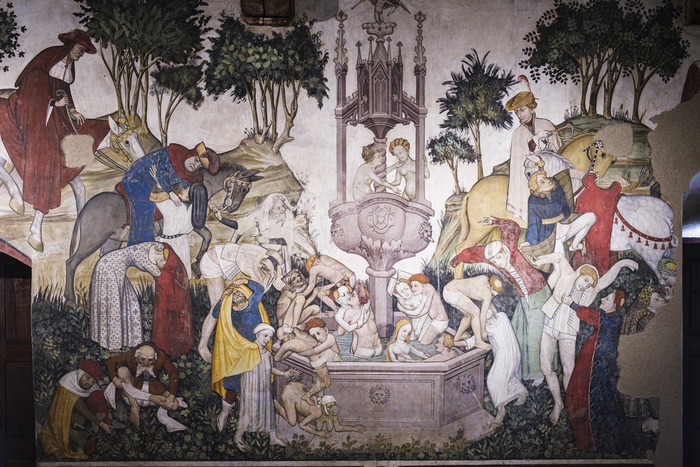SALUZZO - A journey through the centuries between art and history to dream with ancient tales and legends of ladies and knights at the foot of the King of Stone, the Monviso, but also an experience of beauty that narrates the living identity of a territory: is the exhibition "Treasures of the Marquisate of Saluzzo", set up in the historic center of the Piedmontese town from 2 July to 31 October in three locations, the former Monastery of Santa Maria della Stella, the Casa Cavassa Civic Museum and La Castiglia, the ancient residence of the Marquises. Illuminated codices, works on wood, frescoes, sculptures and period documents, for a total of 70 works from some of the main Italian and European museums and conservation bodies, make up a path of undoubted charmconceived by the Artea Foundation and organized in collaboration with the Turin Museums Foundation (Palazzo Madama Civic Museum of Ancient Art), the Municipality of Saluzzo, the Cassa di Risparmio di Saluzzo Foundation, with the historical-scientific contribution of the University of Turin. In the exhibition, curated by Simone Baiocco, Conservator of Arts from the fourteenth to the sixteenth century Palazzo Madama and the Civic Museum of Ancient Art, the visitor will really seem to go back in time and relive the glories of the golden age of the Marquisate (XII- XVI century): a flourishing period of incredible political, economic and artistic development, during which the small frontier state had important and profitable relations with the main European courts.with the historical-scientific contribution of the University of Turin. In the exhibition, curated by Simone Baiocco, Conservator of Arts from the fourteenth to the sixteenth century Palazzo Madama and the Civic Museum of Ancient Art, the visitor will really seem to go back in time and relive the glories of the golden age of the Marquisate (XII- XVI century): a flourishing period of incredible political, economic and artistic development, during which the small frontier state had important and profitable relations with the main European courts.with the historical-scientific contribution of the University of Turin. In the exhibition, curated by Simone Baiocco, Conservator of Arts from the fourteenth to the sixteenth century Palazzo Madama and the Civic Museum of Ancient Art, the visitor will really seem to go back in time and relive the glories of the golden age of the Marquisate (XII- XVI century): a flourishing period of incredible political, economic and artistic development, during which the small frontier state had important and profitable relations with the main European courts.gold of the Marquisate (XII-XVI century): a flourishing period of incredible political, economic and artistic development, during which the small frontier state had important and profitable relations with the main European courts.gold of the Marquisate (XII-XVI century): a flourishing period of incredible political, economic and artistic development, during which the small frontier state had important and profitable relations with the main European courts.
The Marquisate in fact maintained its political autonomy for almost four centuries during which the economic expansion and growing prosperity were also accompanied by a series of important works such as monuments and urban solutions. The narration of the history of the Marquisate in the Late Middle Ages is entrusted in the exhibition path to masterpieces such as the paintings by Pietro da Saluzzo, the Biazaci and the Pocapaglias or the frescoes by the "painter of the Marquisate" Hans Clemer, known as the Master of Elva.
There is also the re-enactment of the Marquis Tommaso III, protagonist of the late Gothic period whose political role was fundamental in the relations between the Marquisate and the Duchy of Savoy and the kingdom of France: the Marquis is the author of a precious manuscript, the Chevalier Errant, one of the most important chivalric texts of the time reflecting the long history of European civilization and cultural traditions shared by the Marquisate. But the visit for the public is not limited to the itinerary in the three locations in the city center, because the exhibition "expands" to enter into dialogue with the other identifying places of the Marquisate, from the Castello della Manta to the Abbey of Santa Maria di Staffarda , from the Marchionale Chapel of Revello to the Tapparelli d'Azeglio Castles of Lagnasco.

